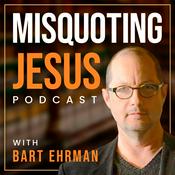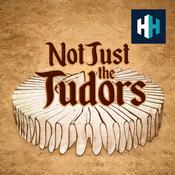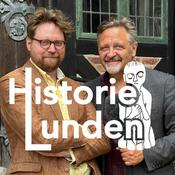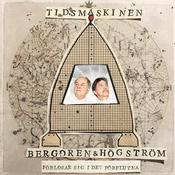98 avsnitt

The Vise Closes: the Eastern Front, episode 91
2026-1-05 | 36 min.
After 10 shattering blows on the Eastern Front in 1944, the Western Allies and the USSR continue to compress nazi Germany in January 1945. Map 1: The compressing front 1a: 1 January 1944 1b: 1 January 1945 1c: 15 January 1945 Map 2: The siege of Budapest, January 1945 Map 3: The Vistula-Oder campaign, January 1945 Map 4: The East Prussia offensive Photos The Budapest Chain Bridge destroyed, January 1945 Ruins of Warsaw, even in 1947 Source: New York photographer Henry N. Cobb, taken in 1947, via Rare Historical Photos.

The Battle for Budapest, Part 1—Episode 90
2025-12-22 | 38 min.
"Budapest lay athwart the main entry route to Austria and Bohemia. It was the main railway hub of the region and also the largest Danubian port. The Red Army could not bypass it. This was the first time in the war that the Red Army had to lay siege to a major city." The Red Army assaults the capital of nazi Germany’s final remaining partner in the Second World War. The war appears to be almost lost—but that’s seen through hindsight. No one at the time knew that. Map 1: The Eastern Front, December 1944 Map 2: Germany’s eastern and western fronts, 1 December 1944 Map 3: The Petsamo-Kirkenes operation in northern Finland Map 4: The Red Army attacks Budapest Operation Konrad II People Mihai I, King of Romania, 1944–1947 Miklos Horthy, Regent of Hungary Miklos Horthy Jr. Ference Szalasi, nazi dictator of Hungary, 1944–1945 Edmund Veesenmayer, Hitler’s “Special Envoy” to Hungary, 1944–1945 SS-Obergruppenführer Karl Pfeffer-Wildenbruch, commander of IX SS Mountain Corps Historical photos: Fighting in Budapest Sources Antony Beevor, The Second World War. New York, NY, USA: Little, Brown and Company, 2012. Evan Mawdsley, Thunder in the East: The Nazi-Soviet War, 1941–1945. London: Bloomsbury Academic, 2016. Anthony Tucker-Jones, Slaughter on the Eastern Front: Hitler and Stalin’s War, 1941–1945. Stroud, Gloucestershire, UK: The History Press, 2017. Morse code by Thane Brown Music composed and recorded by Nicolas Bury

The Battle of Belgrade—Episode 89
2025-12-08 | 40 min.
There was a lot of action on the Eastern Front in the autumn of 1944. In late September, the Red Army and its new allies enter Yugoslavia and connect with communist Partisans led by a man called Tito. The results will echo across the decades. Map 1: The Balkan military theatre, September 1944–January 1945 Map 2: The Bulgarian incursion Map 3: The Battle of Belgrade Photos The Lockheed P-38 Lightning and the Focke-Wulf fw189 The Yakovlev Yak-9 in flight The Yakovlev Yak-9 in the Russian military museum Josip Broz, a.k.a. Tito, far right, with his staff. Sources Antony Beevor, The Second World War. New York, NY, USA: Little, Brown and Company, 2012. Evan Mawdsley, Thunder in the East: The Nazi-Soviet War, 1941–1945. London: Bloomsbury Academic, 2016. Giles Milton, The Stalin Affair: The impossible alliance that won the war. New York, NY, USA: Henry Holt and Company, 2022. Anthony Tucker-Jones, Slaughter on the Eastern Front: Hitler and Stalin’s War, 1941–1945. Stroud, Gloucestershire, UK: The History Press, 2017. Morse code by Thane Brown Music composed and recorded by Nicolas Bury

Horror in East Prussia—Episode 88: The Red Army enters Germany
2025-11-24 | 34 min.
In October 1944, the Red Army entered East Prussia, the heart of German militarism. Horrific war crimes ensued. Map 1: The Red Army’s advances all across the broad front Map 2a: European Theatre, 1 October 1944 Map 2b: European Theatre, 1 November 1944 Map 3a: The Pacific Theatre, 1 October 1944 Map 3b: The Pacific Theatre, 1 November 1944 Map 4: The Gumbinnen Operation Historical photos Konigsberg Castle before World War 1 German officers find evidence of massacre at Nemmersdorf, East Prussia Civilians killed at Nemmersdorf, 1944 Sources Antony Beevor, The Second World War. New York, NY, USA: Little, Brown and Company, 2012. Evan Mawdsley, Thunder in the East: The Nazi-Soviet War, 1941–1945. London: Bloomsbury Academic, 2016. Pat McTaggart, "Goldap Operation: Soviets in the Prussian Heartland,” in WWII History, vol. 14, No. 2, February 2015. Cited in Warfare History Network, February 2015, https://warfarehistorynetwork.com/article/goldap-operation-soviets-in-the-prussian-heartland/ Anthony Tucker-Jones, Slaughter on the Eastern Front: Hitler and Stalin’s War, 1941–1945. Stroud, Gloucestershire, UK: The History Press, 2017. Morse code by Thane Brown Music composed and recorded by Nicolas Bury

The Axis collapses: Beyond Barbarossa, episode 87
2025-11-10 | 35 min.
In the autumn of 1944, nation after nation abandons the cruel, insane Axis to join the Western Allies or USSR: Romania, Bulgaria, Slovkia … as Finland signs an armistice with the USSR. With the Red Army on the border of Germany itself, Hungary faces the choice: to fight on with, or against, the nazis. Map 1: The Red Army invades Slovakia The Dukla Pass is to the right. Map 2: The Battle of Debrecen Photos General (later Marshal) Rodion Malinovsky, 1944 General (later Marshal) Fyodor Tolbukhin, 1944 Marshal Ivan Konev, 1945 Milos Horthy, Regent of Hungary, 1944 Ferenc Szalisi, Leader of the Hungarian Nation, 1944 General Heinz Guderian, Inspector-General of the Army, 1944
Fler podcasts i Historia
Trendiga poddar i Historia
Om Beyond Barbarossa: The Eastern Front of World War 2
Lyssna på Beyond Barbarossa: The Eastern Front of World War 2, En oväntad historia och många andra poddar från världens alla hörn med radio.se-appen

Hämta den kostnadsfria radio.se-appen
- Bokmärk stationer och podcasts
- Strömma via Wi-Fi eller Bluetooth
- Stödjer Carplay & Android Auto
- Många andra appfunktioner
Hämta den kostnadsfria radio.se-appen
- Bokmärk stationer och podcasts
- Strömma via Wi-Fi eller Bluetooth
- Stödjer Carplay & Android Auto
- Många andra appfunktioner


Beyond Barbarossa: The Eastern Front of World War 2
ladda ner appen,
börja lyssna.



































